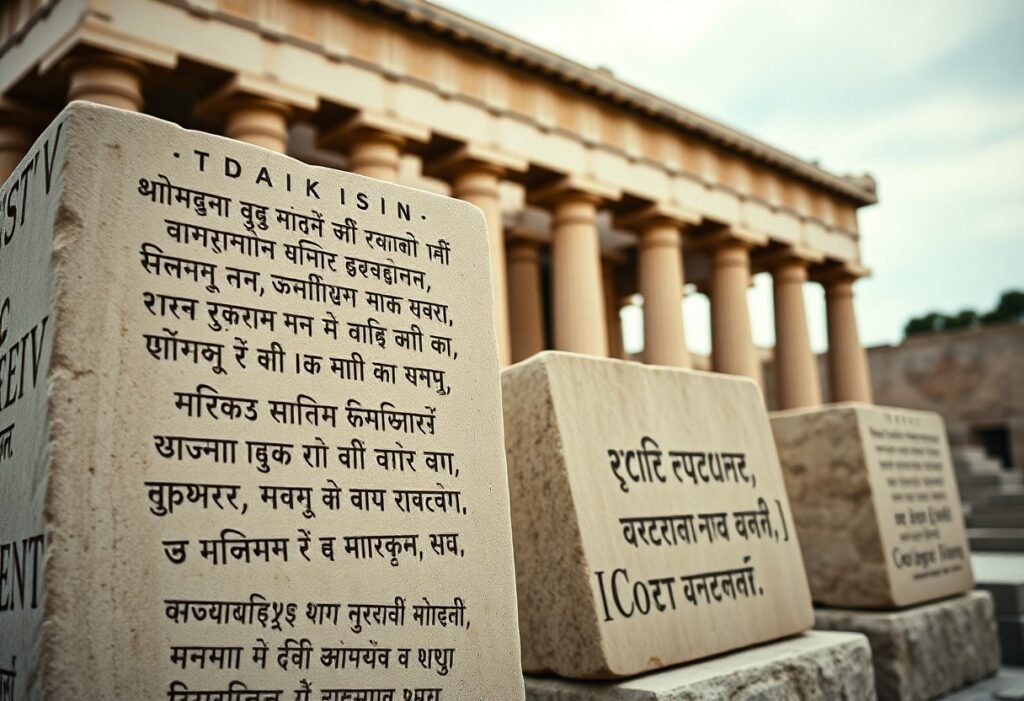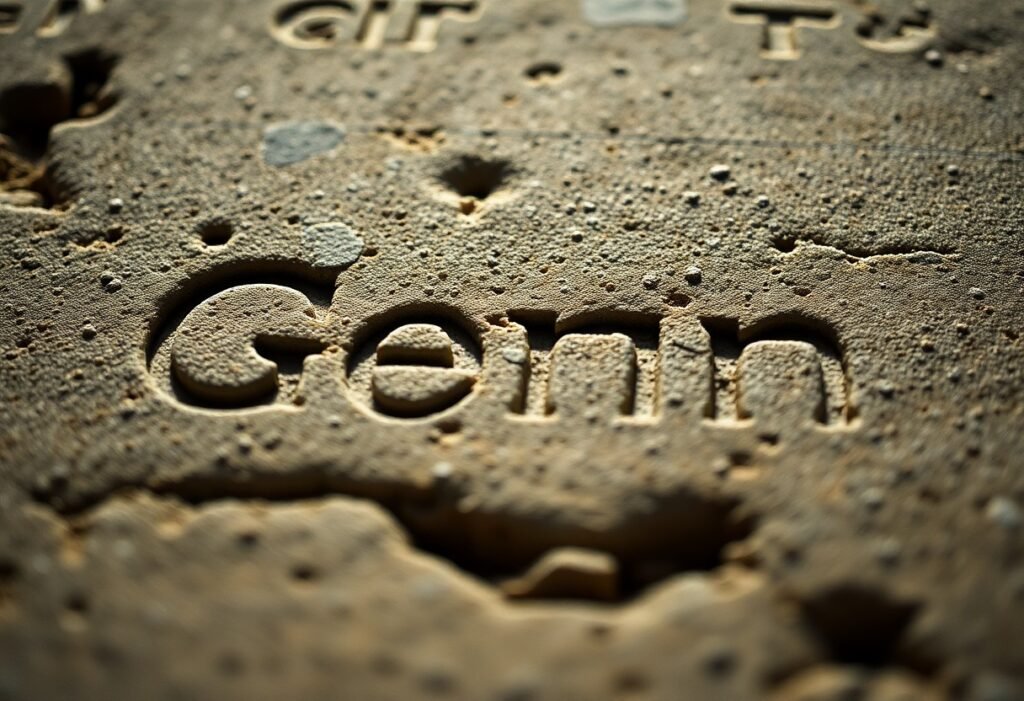Most designers and typography enthusiasts find themselves captivated by the enduring legacy of Greek letterforms. You’ll discover a fascinating journey that spans millennia, from the precise geometric forms carved in ancient stones to the sleek digital typefaces adorning your modern screens. When you explore Greek typography, you’re not just looking at letters – you’re witnessing the evolution of human communication, where each stroke and curve tells a story of cultural transformation. Whether you’re a designer seeking inspiration or a history buff exploring visual culture, Greek fonts offer you a unique blend of artistic expression and historical significance.
Origins of Greek Typography
The history of Greek typography represents a fascinating journey through time. As A History of Fonts from Ancient Symbols to Modern Typography reveals, your understanding of modern Greek fonts begins with the development of writing systems thousands of years ago. You can trace this evolution from basic pictographs to the sophisticated typefaces you see today, each stage reflecting the technological and cultural advances of its time.
Ancient Writing Systems
Before the Greek alphabet emerged, you would have encountered various writing systems across the Mediterranean. Your ancestors used pictographic and ideographic scripts, with symbols representing ideas rather than sounds. These early writing systems laid the foundation for what would become one of the most influential alphabets in human history.
Evolution of Greek Letters
Greek letters evolved from the Phoenician alphabet around 800 BCE, when your ancestors adapted and modified these symbols to create vowel sounds. You can see this influence in many of the letter shapes you use today, as the Greeks transformed the writing system to better suit their language needs.
Systems of writing continued to develop throughout ancient Greece, and you can observe how the letters became more standardized over time. Your modern Greek fonts still carry traces of these ancient forms, though they’ve been refined through centuries of use. The transition from hand-carved letters to movable type in the 15th century brought new possibilities for your typographic expression.
Classical Greek Letterforms
Any exploration of Greek typography must begin with the classical letterforms that shaped Western civilization. You’ll find these forms characterized by their geometric precision and balanced proportions, developed during the Golden Age of Greece (5th-4th centuries BCE). Your understanding of modern Greek fonts starts here, where each letter was crafted to achieve visual harmony while maintaining legibility.
Uncial Scripts
By the 3rd century CE, you would have witnessed the emergence of Uncial scripts, marking a significant evolution in Greek writing. Your modern Greek font collections still draw inspiration from these rounded, majuscule letters that dominated manuscripts for nearly a millennium. You can recognize Uncial scripts by their curved strokes and lack of word separation, features that influenced both Greek and Latin paleography.
Lapidary Inscriptions
Around the 5th century BCE, you would have found Greek inscriptions carved into stone monuments throughout the ancient world. These lapidary letterforms show you how Greeks adapted their writing to different materials, creating letterforms that could be effectively carved into stone while maintaining their distinctive character.
Further examination of lapidary inscriptions reveals how your modern Greek fonts inherit their structural integrity. You can trace the development of serifs and stroke contrast to these stone-carved letters, where masons developed techniques to prevent stone from chipping at the edges of straight lines. Your contemporary Greek typefaces still reflect these practical solutions from ancient stonecutting.
Byzantine Influence
There’s a profound connection between Byzantine art and Greek typography that shaped the development of written language. You’ll find that during the Byzantine era (330-1453 CE), the Greek script underwent significant transformations, establishing writing styles that would influence typography for centuries to come. When you explore Byzantine manuscripts, you’ll notice the distinctive round letterforms and elaborate ligatures that characterize this period.
Religious Manuscripts
Byzantine religious texts showcase some of the most refined examples of Greek calligraphy you’ll encounter. When you examine these manuscripts, you’ll discover the meticulous attention to detail in every stroke, with scribes developing specialized techniques for copying religious texts. You can trace many modern Greek font features back to these sacred documents, where gold leaf and vibrant pigments enhanced the beautiful letterforms.
Decorative Elements
Influence of Byzantine decorative elements extends far beyond basic letterforms. When you look at Greek fonts today, you’ll notice ornamental features that originated in Byzantine manuscripts – from elaborate initials to intricate borders. These design elements have become fundamental to what you might recognize as traditional Greek typography.
This artistic legacy continues to inspire modern font designers. You’ll find that contemporary Greek typefaces often incorporate Byzantine decorative elements in subtle ways – from the slight curves at letter terminals to the balanced proportions of characters. When you’re selecting a Greek font for your project, you’ll encounter numerous options that draw from this rich decorative tradition.
Digital Transformation
Keep in mind how the shift from traditional calligraphy to digital formats has revolutionized your access to Greek typography. You’ll find that the 1980s marked a pivotal moment when designers began converting classical Greek letterforms into digital formats, making these fonts accessible for your modern design needs. This transformation has enabled you to maintain the aesthetic appeal of traditional Greek writing while harnessing the flexibility of digital design tools.
Early Digital Greek Fonts
The initial transition to digital Greek fonts in the 1980s presented unique challenges for your design work. You would have noticed that early digitization efforts focused on preserving the authenticity of historical Greek scripts while adapting them to pixel-based displays. With only 8-bit encoding available, your font choices were limited to about 256 characters, making it challenging to incorporate all the necessary Greek glyphs and diacritical marks.
Modern Interpretations
The contemporary digital landscape offers you unprecedented access to Greek typography. You can now choose from thousands of Greek fonts, with new designs emerging regularly. Modern technology allows you to work with OpenType features, giving you access to alternate characters, ligatures, and sophisticated typography controls that enhance your design capabilities.
Transformation of Greek fonts continues to evolve with your changing needs. You’ll find that advanced font technologies now support multiple weights, styles, and Unicode compliance, allowing you to work seamlessly across different platforms and applications. Whether you’re designing for web, print, or mobile applications, you have access to responsive Greek fonts that maintain legibility and cultural authenticity across all your projects.
Contemporary Greek Font Design
Once again, you’ll find Greek typography experiencing a renaissance in the digital age. Modern designers are reimagining traditional letterforms while preserving their cultural essence. You can see this evolution in popular fonts like GFS Neohellenic and Adobe’s Minion Pro, which offer extensive Greek character sets. Your typography choices now span from classical interpretations to cutting-edge designs that respond to current digital needs.
Traditional vs. Modern Approaches
Greek font design presents you with two distinct paths: traditional methods emphasizing historical accuracy and modern interpretations focusing on contemporary aesthetics. You’ll notice how traditional designs maintain strict adherence to calligraphic principles, while modern approaches experiment with geometric forms and simplified strokes. This duality gives you the flexibility to choose fonts that align with your project’s specific needs.
Technical Considerations
About 80% of modern Greek fonts support both monotonic and polytonic systems. You’ll need to consider various technical aspects when selecting Greek fonts for your projects, including OpenType features, proper diacritical mark positioning, and consistent stroke contrast. These elements ensure your text remains legible across different platforms and sizes.
To maximize your font’s effectiveness, you should verify Unicode compliance and check kerning pairs for Greek characters. Your chosen font must handle ligatures properly and maintain balanced spacing between letters. Consider how the font renders on different screens – what looks good on your desktop might appear differently on mobile devices.
Applications in Modern Design
For designers and creatives today, Greek fonts offer versatile solutions across various design fields. You’ll find these typefaces bringing authenticity to branding, editorial design, and digital interfaces. As highlighted in A Complete Guide to Greek Typography, modern interpretations of Greek letterforms have evolved to meet contemporary design needs while maintaining their distinctive character.
Commercial Uses
Against the backdrop of global markets, you’ll notice Greek fonts making significant impacts in retail, hospitality, and corporate branding. Your business can leverage these typefaces to create authentic Mediterranean restaurant identities, craft compelling packaging designs, or develop distinctive corporate communications that resonate with Greek-speaking audiences.
Cultural Projects
Between heritage and innovation, you’ll find Greek fonts playing an important role in museum exhibitions, cultural festivals, and educational materials. Your cultural projects can benefit from these typefaces to convey historical authenticity while maintaining modern readability.
Due to the growing interest in cultural preservation and digital humanities, you’ll see Greek fonts increasingly featured in digital archives, educational platforms, and interactive exhibitions. Your projects can utilize these typefaces to bridge the gap between historical documentation and contemporary presentation, making ancient texts and artifacts more accessible to modern audiences.
Final Words
With these considerations in mind, your journey through Greek typography reveals a fascinating blend of ancient heritage and modern innovation. As you explore the vast landscape of Greek fonts, you’ll find tools that can transform your design projects from simple text layouts into compelling visual stories. By understanding the evolution from ancient scripts to contemporary digital typefaces, you’ve gained valuable insights into choosing fonts that honor tradition while meeting modern design needs. The next time you select a Greek font for your project, you’ll be equipped to make informed decisions that enhance your visual communication and connect meaningfully with your audience.





